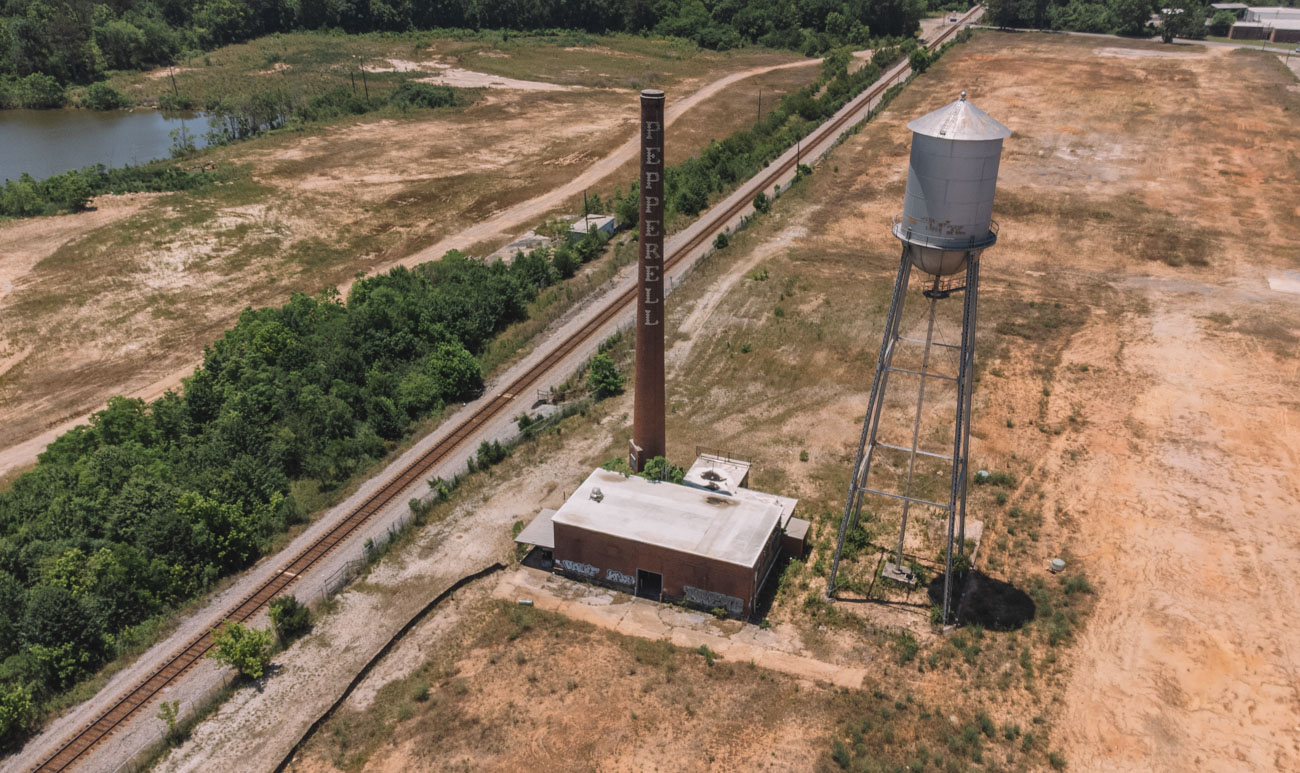| City/Town: • Opelika |
| Location Class: • Industrial |
| Built: • 1926 | Abandoned: • 2006 |
| Historic Designation: • National Register of Historic Places March 31, 2014 |
| Status: • Abandoned |
| Photojournalist: • David Bulit |
Located in Opelika, the Pepperell Mill was a historic textile mill owned and operated by the Pepperell Manufacturing Company. The Pepperell Manufacturing Company was founded in 1844 by textile pioneer Samuel Batchelder after purchasing a defunct cotton mill in Biddeford, Maine along the Saco River. He named the company after William Pepperell, a colonial merchant who is widely remembered for organizing, financing, and leading the 1745 expedition that captured the French fortress of Louisbourg during King George’s War. He was also the most prominent slaveholder in the history of the state of Maine. The company was formally organized in 1850, with another mill on the same river site already under construction.
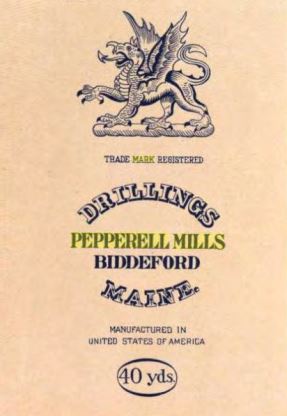
As the company began exporting to China and India in 1851, the owners realized there was a language barrier and they needed a trademark symbol to identify the Pepperell products. A Boston artist was hired to design the logo, a stylized dragon resembling the Welsh Dragon with an Oriental look. The company’s “chop” or logo became one of the most recognized textile trademarks with one U.S. Department of Commerce report in 1916 noting that “The Dragon Chop (or trademark) of the Pepperell Manufacturing Company commands the highest price because of its good quality and the fact that it has been in the market for many years and is a well-known chop.” A variation of the dragon chop is used by Pepperell High School in Lindale, Georgia, where the Lindale Mill once owned by the Pepperell Manufacturing Company is located.
Starting in the 1830s and 1840s, New England’s textile mills became victims of their own success as overproduction caused prices to plummet. During the Civil War, many northeast mill towns suffered severe financial hardships due to serious shortages of labor and materials. Cotton planters and Confederate leaders sought to secure full diplomatic recognition and possibly aid from European consumers of their produce, mainly Great Britain, by causing a worldwide cotton shortage. The Confederates placed an embargo on cotton exports in the summer of 1861, but by the time the embargo was lifted, the Union navy had blockaded Confederate ports. Due to the blockade, British manufacturers bought stored up pre-war cotton from Northern mills at premium prices while cotton production in India, Egypt, and Brazil increased to meet British demands. The Union’s army presence in Memphis and New Orleans in 1862 brought back life to the cotton market with unofficial cotton sales being made across enemy lines to factories and mills in the north. The Pepperell Mills was one of the few lucky enough to have remained in operation throughout the entirety of the war. They produced canvas for tent cloth and for wagon covers, sheeting for the Sanitary Commission (the Civil War counterpart of the Red Cross), jeans for soldiers’ shirts, and cotton drills for a number of Army and Navy use.
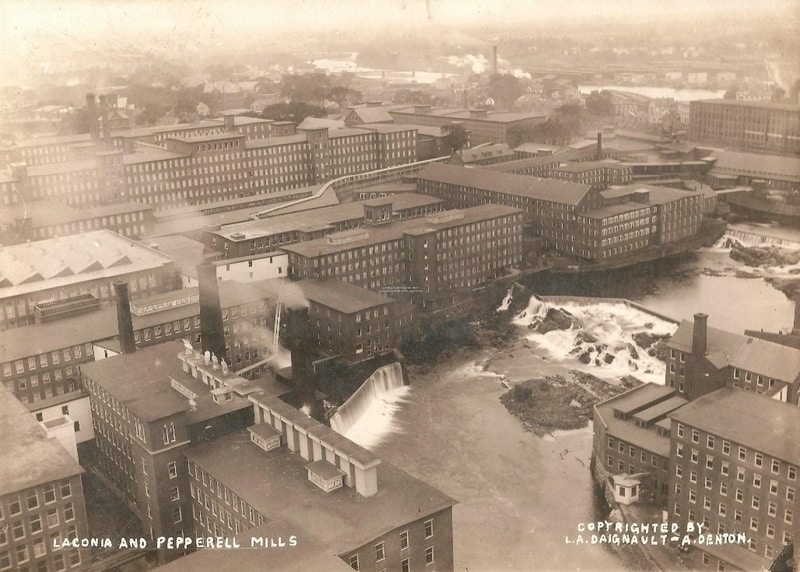
By 1866, Pepperell had three mills making shirting, sheets, and jeans for sale domestically and overseas. In 1900, the Laconia Mills located across the Saco River in Biddeford, Maine, did not fare well during and after the Civil War. It was bought up by the Pepperell Manufacturing Company and became the Laconia Division of the Pepperell Mills. This occurred at a time when the New England textile industry was declining as aging mills had trouble competing with many new technological advances in the industry, mainly the advancement of steam-powered machinery and equipment as opposed to hydropower which many of these mills ran on. Northern textile companies began looking to the South where labor costs were lower, unions were weak, the weather was milder, and raw cotton was available locally. As a result, decisions were made not to modernize their New England mills and instead, put their money into building newer and more modern textile mills in the South. According to the National Park Service, “…New England mill towns experienced an early version of the capital flight that plagued communities in the northeast and the Midwestern industrial heartland in the 1970s and 1980s.“
Between 1890 and 1929, the number of cotton mills in the state of Alabama increased from thirty-one to eighty-three. Believing that industrial development was the key to economic prosperity, towns, and cities throughout Alabama competed to be chosen as the site for a new textile mill. By 1890, the town of Opelika had the potential to be an attractive site for a textile factory cotton was the dominant crop in the surrounding area and two rail lines converged in the town which linked to the river ports in Columbus, Georgia, and Montgomery, Alabama. Unfortunately, the town experienced decades of political and social instability as a result of conflicts over railroad debts, making it difficult to attract investors. In 1900, local businessmen and investors organized a company to build and operate the Opelika Cotton Mill as the town’s first textile mill. By the mid-1920s, the mill was struggling as a result of an industry-wide downturn after the end of World War I.
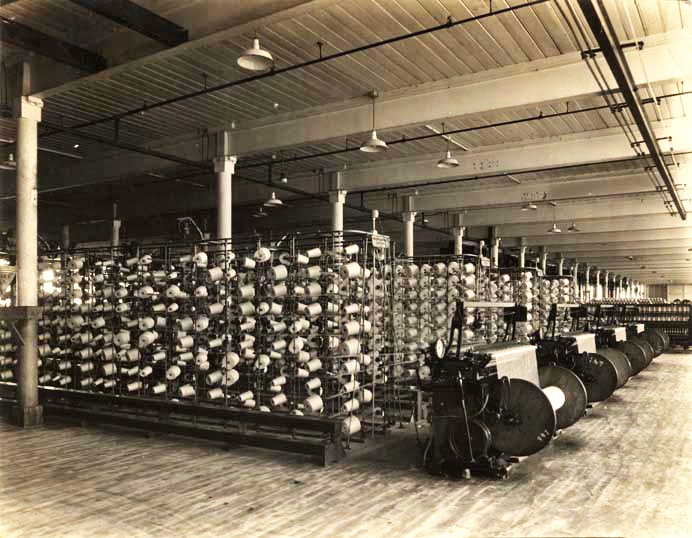
In 1924, representatives for the Pepperell Manufacturing Company were traveling through Alabama in search of a location for a new mill, making a stop in the town of Opelika. To entice the company, local residents raised $62,500 in cash and offered Pepperell 300 acres of land while the local government promised a five-year tax abatement and low tax assessments after the first five years. The company accepted the offer and in early-1925, ground was broken in a former cotton field, and construction began on a mill and a mill village. The original mill was composed of a brick factory, an opener room, and a warehouse. The mill was later expanded in 1929 to include an office building and a second factory building to house more weaving machines. Most of the machines came from Pepperell’s northern mills.
In 1926, approximately 350 men and women worked at Pepperell’s Opelika mill, which manufactured fine fabrics as well as cotton drills and jeans. The same year, one of Pepperell’s best-known brand names was introduced, a line of sheets called Lady Pepperell. By 1934, the mill employed between 800 and 900 people, although workers’ hours were reduced due to the nationwide economic depression and the passing of the Fair Labor Standards Act. During World War II, demand for industrial fabrics increased as manufacturers who made aircraft, explosives, firearms, trucks, and tanks for the United States military used abrasive fabrics such as the jeans and drills produced in Opelika to finish metal parts. The mill also began manufacturing sheeting which the military used as bedding and for the outer shell of hammocks used in the Pacific theater. To meet the demand, Pepperell stopped the production of fine fabrics and focused on manufacturing jeans, drills, and sheeting. During this period, the number of employees surpassed 1,000. Following the war, Pepperell continued to expand the mill with the construction of a bleachery in 1947, an office building in 1955, and a water tower in 1975.
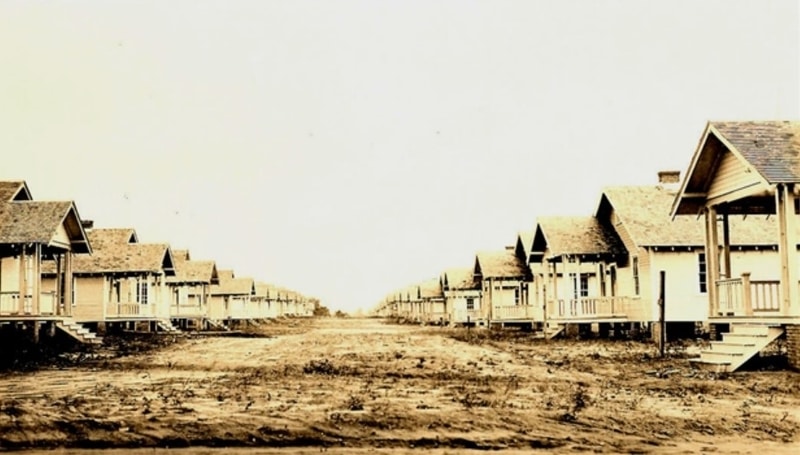
The mill village initially contained 100 houses for employees with fifty more constructed the following year. By 1946, the village included approximately 240 houses. All of the houses had running water and electricity, conveniences that weren’t available to most in rural Alabama in the 1930s and 40s. In addition to housing, the village also contained a variety of community buildings. Pepperell School was built in 1925 to accommodate grades one through six and was expanded in 1945 to includes grades seven through nine. A brick commercial building was built in 1927 to house a movie theater, but it soon closed and was replaced with a grocery store, barbershop, drugstore, and post office. In 1926, the company constructed a church that was shared by both Baptists and Methodists, with each denomination holding services every other week. It wasn’t until 1952 that another church was built for the Baptist congregation so that services can be held every week.
By the 1940s, mill companies found that mill villages were no longer practical as improved roads and the increased availability of automobiles made it easier to commute to work. Pepperell Mill Village was one of the last company-owned mill villages in Alabama. In 1958, the company began selling the houses and land, giving current occupants the option to purchase their houses. Despite many employees living outside the village, which was too small to house the entire workforce, many employees continued to live within the village well after 1958. The company donated the commercial building to the American Red Cross, and the Baptist and Methodist churches gained ownership of their buildings. In the early 1960s, the City of Opelika annexed the Pepperell Mill Village.

In 1965, the Pepperell Manufacturing Company merged with the WestPoint Manufacturing Company of West Point, Georgia, to form West Point-Pepperell, Inc. In the following years, the company continued expanding, acquiring Alamac Knitting Mills, Inc., and American Rug and Carpet Company by 1969. The company expanded its carpet production, establishing Georgian Carpets in 1976 and purchasing almost all of Ludlow Corporation’s carpet manufacturing facilities. The knitting operations of the Duplex International Division of Reeves Bros., Inc. were purchased in 1978. The company celebrated record sales and earnings highs having surpassed $1 billion for the first time in 1979.
West Point-Pepperell would continue acquiring companies throughout the 1980s including one of their rivals, J. P. Stevens & Company. This acquisition cost the company $1.2 billion, doubling its debt, and making it ripe for a takeover. In 1989, William Farley, whose holding company owned Fruit of the Loom, bought 95 perfect of West Point-Pepperell’s stock with plans on raising enough money to purchase the remaining stock. The company fought the takeover vigorously with employees burning Fruit of the Loom underwear during demonstrations, company attornies seeking aid from state legislators for anti-takeover legislation, and executives leaving the company with the most highly profitable licenses. The early-1990s recession became problematic as well. The company’s primary customers were suffering causing sales to plummet. In late-1992, West Point-Pepperell filed for Chapter 11 bankruptcy, restructuring, and emerging from bankruptcy as WestPoint Stevens. Ten years later, the company filed for bankruptcy again and closed many of its U.S. manufacturing plants within a few years, the Opelika Pepperell mill being one of them which closed in 2006.

Having been abandoned for years, Darryl Saucier, owner of Elmore County-based Saucier Investments LLC, purchased the property in 2011. On the night of March 12, 2013, firefighters responded to a massive fire at the old mill which quickly spread throughout the entire structure. Residents in the area claimed they heard a loud explosion followed by fire erupting from the building. Explosions could be heard in the days leading up to the fire as part of the mill was in the process of being demolished which would’ve left a portion of it preserved for development. This led many residents to suspect that the demolition crew was at fault. At the time, Saucier was working on getting the mill and village added to the National Register of Historic Places with further plans of having a prospective buyer purchase and convert the mill’s main building into loft apartments.
After the fire, a group of former employees, mill village residents, the Opelika City Council, and Opelika Historic Preservation Society raised enough money to preserve the cement dragon plaque that had hung over the door to the bleachery. It currently stands outside the Museum of East Alabama in downtown Opelika. The Pepperell Mill and Mill Village Historic District were later listed on the National Register of Historic Places on March 31, 2014. While the mill village remains preserved, all that remains of the Pepperell Mill complex is the old smokestack and water tower.

